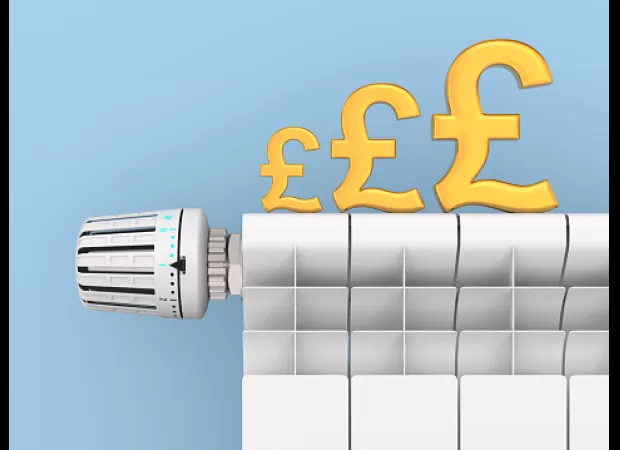Change energy providers for summer to keep money in your pocket.
You're probably missing out on good deals.

Switching apathy is a common occurrence these days, but it's important to remember that you could potentially be missing out on some great deals. With the rising cost of energy, our gas and electricity bills have become a significant part of our household budgets. Unfortunately, in recent years it has been difficult to find any savings by switching providers.
The good news is that energy prices have finally dropped, and there is a chance for some of us to save money by choosing a different tariff, whether it's with our current provider or a new one. Laura Suter, head of personal finance at DIY investment platform AJ Bell, explains that despite the opportunity to save, many consumers in Britain are stuck in a state of 'switching apathy' and are unlikely to take advantage of the deals available.
"We're finally out of the period where it wasn't worth fixing your energy deal," she says. "It's worth taking the time to compare what your current energy provider is offering and see if there are any cheaper options, especially with the recent drop in prices and the potential to save more than the energy price cap."
However, determining the pros and cons of different tariffs can be a daunting task. Laura advises that it's important to do some research on the price cap and potential discounts from your energy provider in order to make an informed decision.
The first step is to understand your current situation by checking your latest energy bill. Whether it's received through the post or online, your bill should contain information about your current tariff and any better options that may be available to you. Most of us are on tariffs that align with the government's energy price cap. However, if you have a fixed deal, you may be paying more or less than the cap.
The government's price cap sets a maximum price for each unit of gas and electricity used, and most non-fixed deals are subject to this cap. As of July 1, those on a deal based on the price cap should see a seven percent decrease in their energy costs. However, for those on a fixed deal, the price will not change. This means that switching may be a more cost-effective option, but it's important to consider any potential exit penalties before making a decision.
Looking into the future, it's essential to consider what may happen to energy prices. For those on a fixed-rate deal above the price cap with no penalties, switching is a clear choice. However, if you're not in this position, you'll need to do some calculations to determine if switching to a fixed-rate deal or staying with your current one will save you more in the long run.
The price cap changes every three months, and while it is set to decrease in July, there is less certainty about what will happen after that. According to energy price consultancy Cornwall Insight, prices may rise by 12 percent in October and remain at that level in January. As most of us tend to use more energy in the winter, those who switch to a fixed-rate deal now will likely be better off. However, these predictions are affected by various factors, such as global politics, weather, and the macroeconomic climate.
If prices do fall instead of rise again, those on fixed rates may end up paying more than if they had not switched. However, if they choose a tariff without exit penalties, they can switch again and potentially save more.
Now, it's important to consider the available tariffs and which one may be the most attractive option. For those currently on the price cap, two tariffs are worth considering: a fixed-rate and one that follows the price cap.
The Next Pledge 1 tariff from E.ON guarantees that if you use an average amount of energy, you will save £50 over 12 months compared to the average price cap customer. This tariff has no exit fees, but it's worth noting that it is not a fixed rate, so it may increase if the price cap does. However, it will always be cheaper than the cap.
The Octopus 12-month fixed June 2024 v1 tariff from Octopus Energy is currently fixed for a year and is three percent lower than the current price cap. This means that if the price cap falls again on July 1, customers will pay more than the cap during the summer months. However, if prices rise as expected on October 1, they will pay less during the winter. This tariff also has no exit fees, so if prices unexpectedly fall again in October, customers can switch to a better rate.
While switching energy providers, it's also worth considering any extra rewards you can receive. For example, Octopus Energy offers a referral program where customers can earn £50 for referring a friend. Both the referrer and the friend also receive £50 in free credit. E.ON also has a similar referral program through a referral link, so there are opportunities to save even more money by switching.
If you don't have any exit fees and want to pay less for your energy, making the switch is a simple process. You can apply to your new provider, and the switch should occur within five working days. If it doesn't, you are entitled to compensation. Keep in mind that you cannot switch if you are more than 28 days in debt to your supplier, and you will receive a final bill upon giving a meter reading. Any leftover credit will be refunded to your bank account. For more information about switching, you can visit the energy regulator Ofgem's website.
Finally, it's essential to keep an eye on what tariffs are available, as the next energy price cap announcement is set to take place on August 27. Mark this date in your calendar so you can check if there are any opportunities to save money by switching again, depending on the latest price cap.






